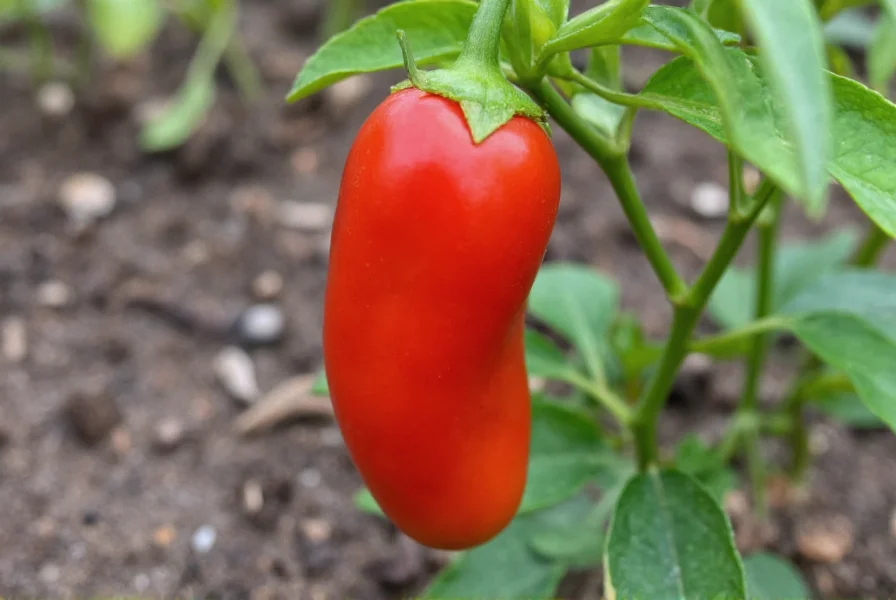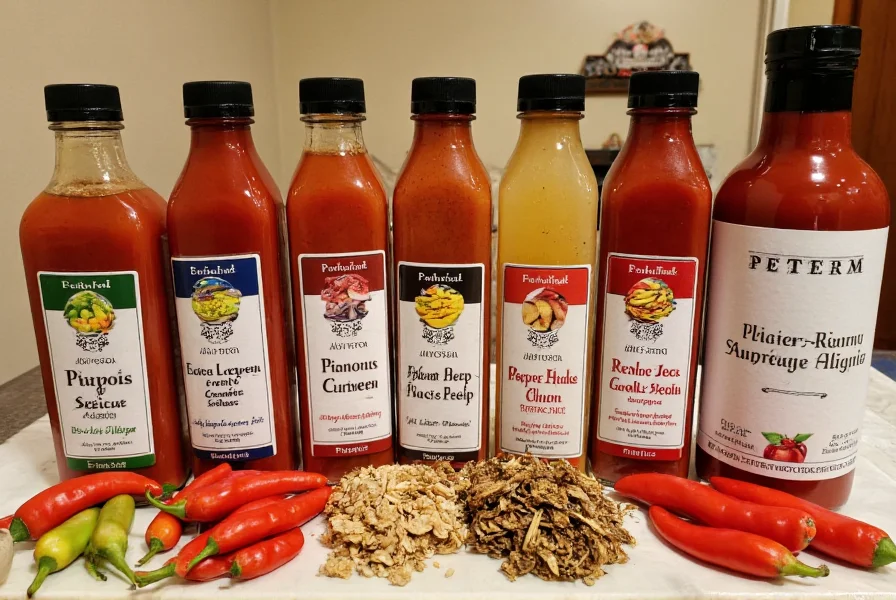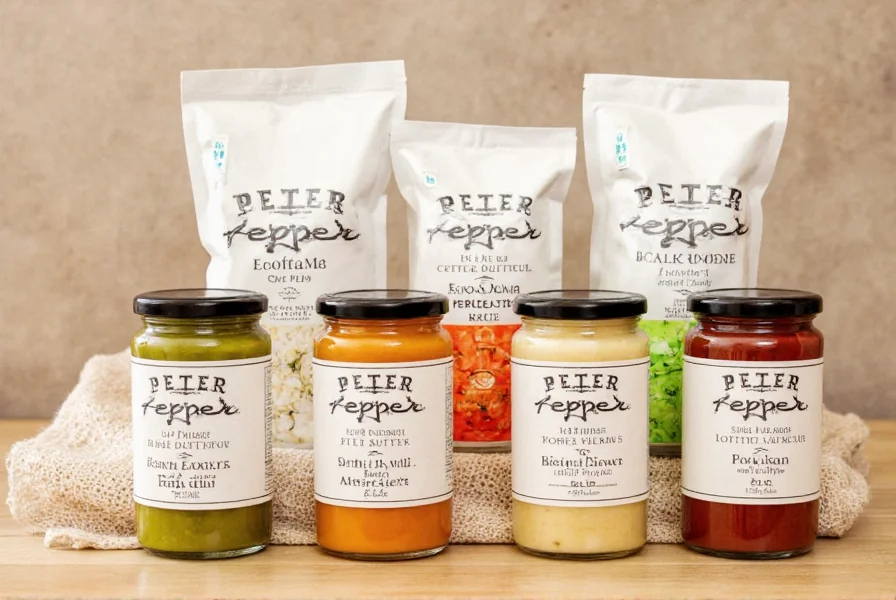| Characteristic | Detail |
|---|---|
| Scientific Name | Capsicum annuum 'Peter' |
| Heat Level | 5,000-30,000 SHU (medium) |
| Mature Color | Bright red |
| Plant Height | 24-36 inches |
| Days to Maturity | 70-80 days |
Understanding Peter Pepper: More Than Just Its Shape
While the distinctive appearance of Peter pepper often draws initial attention, this Capsicum annuum cultivar offers genuine culinary value that extends far beyond its novelty factor. Professional chefs and home cooks increasingly incorporate Peter pepper products into their recipes for their balanced heat and complex flavor profile.
Botanical Characteristics and Growing Requirements
Peter pepper plants thrive in warm climates with well-draining soil and require approximately 70-80 days to reach maturity. The peppers start green and gradually transition to a vibrant red when fully ripe. Each plant typically produces 15-20 fruits per season under optimal growing conditions.
Gardeners seeking to grow peter pepper plants should note they require similar conditions to other hot pepper varieties: full sun exposure, consistent watering without waterlogging, and temperatures above 70°F (21°C). The plants reach 24-36 inches in height and benefit from staking as the fruit develops.

Culinary Applications of Peter Pepper Products
Chefs value peter pepper chili for its versatile flavor profile that combines moderate heat with subtle fruity notes. Unlike some extremely hot varieties that overwhelm other ingredients, Peter pepper enhances dishes without dominating them. This makes it particularly valuable in:
- Specialty hot sauces where visual presentation matters
- Salsas and relishes requiring medium heat levels
- Roasted pepper dishes and stuffed pepper recipes
- Dried and ground applications as a unique spice alternative
When processing peter pepper products, safety precautions are essential. Chefs recommend wearing gloves when handling fresh peppers and avoiding contact with eyes or sensitive skin. The capsaicin content, while not extreme, can cause significant irritation.
Commercial Availability and Product Types
Though not as widely available as jalapeños or habaneros, peter pepper products have gained niche popularity. Consumers searching where to buy peter pepper products will typically find them through:
- Specialty seed companies for home cultivation
- Regional farmers' markets in warmer climates
- Artisan hot sauce producers creating limited batches
- Online retailers specializing in unique chili products
When evaluating peter pepper sauce quality, look for products that maintain the pepper's distinctive shape in whole-fruit sauces or clearly indicate the pepper variety used in processed sauces. Reputable producers will specify Scoville heat units to help consumers gauge expected spiciness.

Substitution Guide for Peter Pepper
When peter pepper products aren't available, several alternatives can approximate their culinary properties:
- Cayenne peppers - Similar heat level but different flavor profile
- Serrano peppers - Slightly hotter but comparable fruitiness
- Red Fresno peppers - Milder alternative with similar appearance
- Guajillo peppers (dried) - For recipes using dried Peter peppers
Cooks exploring peter pepper chili recipes should adjust quantities based on the substitution's heat level, as Scoville ratings vary significantly between alternatives.
Preservation Methods for Home Use
Those growing peter pepper plants can extend their harvest through several preservation techniques:
- Freezing - Whole or sliced peppers maintain quality for 6-8 months
- Drying - Creates versatile dried peppers for grinding into powder
- Pickling - Preserves texture while adding complementary flavors
- Oil preservation - Creates infused oils for cooking applications
Each preservation method affects the final peter pepper products differently, altering both heat perception and flavor complexity. Experimentation helps determine which method best suits specific culinary applications.
Frequently Asked Questions
What exactly are Peter pepper products?
Peter pepper products include any culinary items made from the Capsicum annuum 'Peter' chili variety, such as fresh peppers, dried peppers, hot sauces, powders, and infused oils. These products leverage the pepper's distinctive shape and medium heat level (5,000-30,000 Scoville units) for both visual appeal and flavor.
How hot are Peter peppers compared to other chili varieties?
Peter peppers register between 5,000-30,000 Scoville Heat Units, placing them in the medium heat category. They're hotter than jalapeños (2,500-8,000 SHU) but milder than habaneros (100,000-350,000 SHU). The heat level can vary based on growing conditions, with stressors like limited water increasing capsaicin production.
Where can I find authentic Peter pepper products?
Authentic Peter pepper products are most commonly available through specialty seed companies for home cultivation, regional farmers' markets in warm climates, artisan hot sauce producers, and online retailers specializing in unique chili products. When purchasing processed products like sauces, look for clear labeling that specifies Peter pepper as the primary ingredient.
Are Peter peppers safe to handle and consume?
Yes, Peter peppers are safe to handle and consume like other chili varieties, but proper precautions are recommended. Always wear gloves when handling fresh peppers, avoid touching your face, and wash hands thoroughly afterward. The capsaicin can cause skin and eye irritation. When cooking, start with small amounts to gauge heat tolerance, as individual sensitivity to capsaicin varies significantly.
What are the best culinary uses for Peter pepper products?
Peter pepper products excel in applications where visual presentation matters, such as whole-fruit hot sauces, stuffed pepper dishes, and decorative garnishes. Their medium heat level makes them versatile for salsas, relishes, and roasted pepper dishes where balanced spiciness is desired. Dried Peter peppers work well in spice blends, while infused oils showcase their flavor in subtle applications.











 浙公网安备
33010002000092号
浙公网安备
33010002000092号 浙B2-20120091-4
浙B2-20120091-4